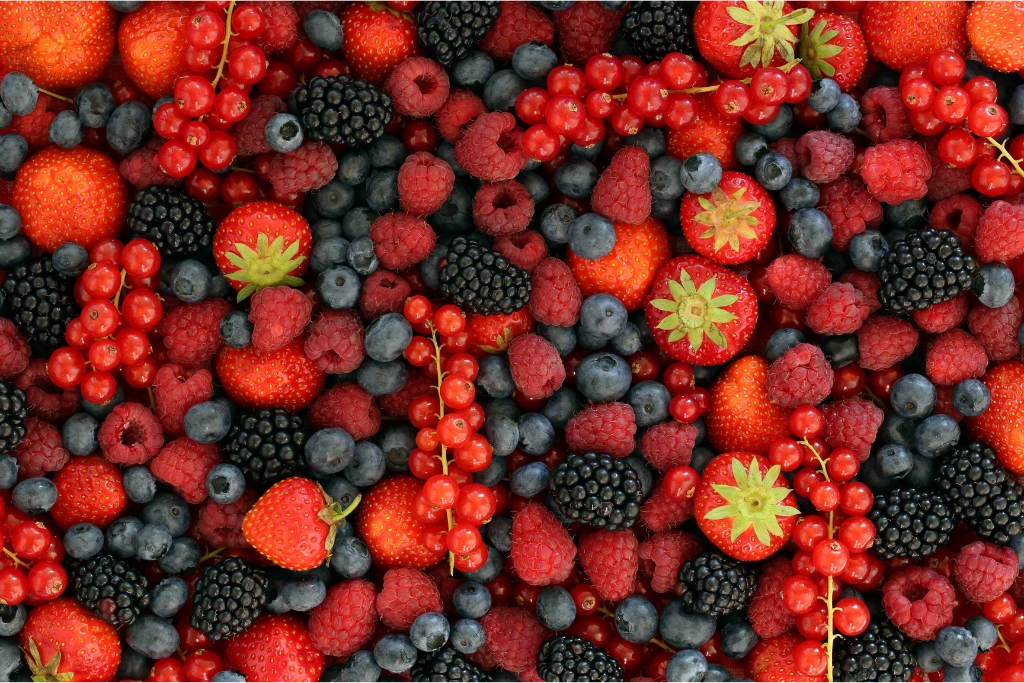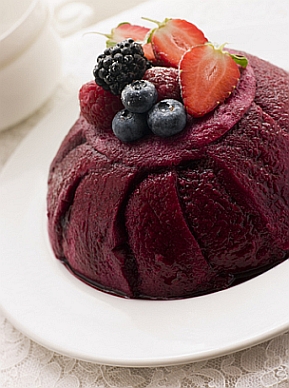Summer Pudding
Summer Pudding has to be one of the best English desserts I've ever come across. It's delicate and refreshing in the summer, luscious even in the depths of winter.
It's beautiful to look at, too. The jewel colours make it ideally suited to a summer picnic and even to being served as a lighter end to a festive Christmas dinner. And it's very easy and quick to put together, which is a boon when you're busy preparing food for a crowd.
Summer pudding requires assembly rather than elaborate cooking or baking. And exact measuring of ingredients is not necessary. The size of the pudding depends almost entirely on the quantity of fruit you have available and the size of the pudding bowl you can find to make it in. The only thing that's not negotiable is the time the pudding needs to spend in the refrigerator - six hours minimum for all the flavours to blend. You can even leave it overnight.
What goes into a summer pudding?
Fruit and bread, maybe a little sugar - that's all.
This is one time where 'plastic' ready-sliced supermarket bread can be used without doing damage to the dish. But home-baked bread is equally good.
Strawberries, raspberries, currants and blackberries all make a goodly pudding. Morello cherries - without the stones- are a favourite of mine. Mix them to your heart's and garden's content. Just don't be stingy.
To fill a 1 litre pudding basin or bowl, you'll need approximately the following:
- 6-8 slices of white bread, crusts off
- 700g-800g of red fruits - these can be fresh or frozen, and any mix that pleases you
- Sugar to taste
 Summer Pudding Fruits © Marek Photo's | canva.com
Summer Pudding Fruits © Marek Photo's | canva.com
Assembling the Pudding
 Traditional Summer Pudding
Traditional Summer Pudding © Monkey Business Images | dreamstime.com
Wash all the fruit and cut any extra-large strawberries into manageable pieces. Place the fruit in a large pan and heat gently until the juices run.
Slice the bread and trim the crusts off. Keeping one slice aside for the top, use the others to closely line a greased pudding basin or glass bowl.
Taste your fruit and add the sugar if they seem to need it. You want lots of fragrant juices and a good balance between sweetness and tartness. Then pour the fruit and juice into the lined pudding basin to about 1cm / 1.5in from the upper edge of the bread.
Place the last slice of bread on top and press down gently to seal the fruit in its casket of bread.
Stand the pudding basin on a large plate. Leave it for a little while for the bread to absorb some of the juice before placing a weighted plate on top of the pudding. (You'll end up with lots of the juice on the plate rather than in the pudding if you do this too soon.)
Then place the pudding and plates in the fridge and leave alone for at least six hours!
When ready to serve, unmold the pudding and cut into slices. Drizzle with thick cream and enjoy. Sparkling wine - well chilled - makes a very good accompaniment too!
How do you keep your recipes?
Are you a passionate cook or baker with a treasure trove of old, beloved recipes scattered around your kitchen? Let me help you organise and preserve your culinary heritage in style.
These elegantly designed blank recipe notebooks don't take up much room, but with their user-friendly layout and durable design, they offer plenty of space for your recipe collection. This recipe keeper notebook is your perfect kitchen companion. And filled with their favourite recipes it makes a great gift for children heading to college - or even as a wedding gift.
For other English desserts, click here to return to Traditional Recipes.



